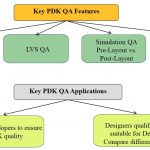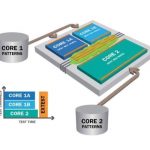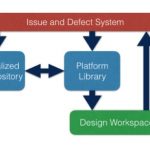ARM estimates that many SOC’s designed today have over 200 IP components. This statistic comes from a recent white paper ARM published addressing the topic of system performance analysis. This number is only going to go up. According the ARM this creates a huge challenge in ensuring the system is designed with adequate performance… Read More
Tag: soc
Bringing the Semiconductor IP Community Together!
Next week is the first REUSE Semiconductor IP Tradeshow and Conference at the Computer History Museum in Silicon Valley. The presentation abstracts are up now and there are a few I want to highlight as they are companies that we work with on SemiWiki.… Read More
Is That PDK Safe to Use Yet?
In our semiconductor ecosystem we have foundries on one side supplying all of that amazing silicon technology, and IC designers on the other side that take their system ideas then go implement them in a SoC using a specific foundry. The required interface between foundry and chip designers has been the Process Design Kit (PDK), … Read More
DFT Approaches for Giga-gate SoC Designs
In the early days of IC design there were arguments against using any extra transistors or gates for testability purposes, because that would be adding extra silicon area which in turn would drive up the costs of the chip and product. Today we are older and wiser, realizing that there are product pricing benefits to quickly test each… Read More
SOC Design Techniques that Enable Autonomous Vehicles
Robots – we have all been waiting for them since we were young. We watched Star Wars, or in the case of the slightly longer-lived of us, we watched Forbidden Planet or Lost in Space. We knew that our future robot friends would be able to move around and interact with their environment. What we did not foresee long ago was that instead of… Read More
SoC FPGAs for IoT Edge Computing
One of the reasons for the explosive growth of IoT is that embedded devices with networking capabilities and sensor interfaces are cheap enough to deploy them at a plethora of locations.
However, network bandwidth is limited. Not only that, but also, the latency of the network can be of seconds or minutes. By the time the sensor data… Read More
The Perfect Wearable SoC…?
Power is Everything
During Apollo 13 after the oxygen tank in the service module exploded forcing the crew to use the lunar module as a life boat to get back home, John Aaron – an incredibly gifted NASA engineer who was tasked with getting the Apollo 13 crew back home safely – flatly stated “Power is everything…we’ve… Read More
5 Reasons Why Platform Based Design Can Help Your Next SoC
Semiconductor design IP and verification IP have been around for decades, but just because your company has lots of IP doesn’t mean that you’re getting all of the benefits of a design reuse methodology. Maybe your business has encountered some of the following issues:
STT-MRAM – Coming soon to an SoC near you
An increasing percentage of SoC die area is being allocated to memory arrays, as applications require more data/instruction storage and boot firmware. Indeed, foundries invest considerable R&D resources into optimizing their array technology IP offerings, often with more aggressive device features than used for other… Read More
Reusable HW/SW Interface for Portable Stimulus
Although semiconductor community has ushered into the era of SoCs, the verification of SoCs is still broken. There is no single methodology or engine to verify a complete SoC; this results in duplication of efforts and resources for test creation and verification at multiple stages in the SoC development, albeit with different… Read More




